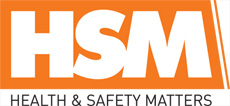
 |
Mark Sennett
Managing Editor |
 |
Kelly Rose
Editor |
| Home> | Managing Health & Safety | >Decontamination Showers | >Most workplace injuries from harmful substances are burns |
Most workplace injuries from harmful substances are burns
13 October 2025
CHEMICAL BURNS continue to be the leading type of non-fatal injury caused by exposure to or contact with harmful substances in workplaces across Great Britain. They account for nearly 60% of all injuries in 2023/24, according to a Freedom of Information request submitted by Hughes Safety Showers.

The RIDDOR figures show that of the 740 injuries recorded last year due to hazardous substances, 438 were chemical burns, representing 59.19% of all incidents. This marks a 6.57% increase in burns from the previous year, highlighting a need for continued vigilance.
While overall injuries from harmful substances have decreased over the last decade, the recent uptick, a 12.9% rise in total cases in the past year, indicates that exposure risks remain prevalent across industries.
Experts are urging employers to reinforce best practices around chemical handling and invest in adequate protective equipment and emergency response infrastructure. This includes the installation of emergency safety showers and eyewash stations, which play an important role in reducing the severity of chemical burns when incidents occur.
James Hamilton, global engineering manager at Hughes Safety Showers, said: “The quicker a harmful substance is removed from the skin, the less damage it can do. Having compliant, well-maintained emergency decontamination equipment can mean the difference between a minor injury and a life-changing one.”
In addition to physical safeguards, regular risk assessments and staff training on chemical spill procedures are essential in reducing incident rates and improving on-site response.
James said: “Despite long-term improvements in chemical safety, the recent increase in total injuries and burns is a clear reminder that complacency is not an option. With burns making up the majority of injuries linked to hazardous substances, employers must reassess their safety protocols, ensure compliance with industry standards, and invest in fast-acting emergency equipment that can help mitigate harm.”
For more information, visit www.hughes-safety.com- Hughes promises top quality
- The importance of tepid water
- Spritz of safety to fragrance manufacturing
- Safety measures in food production
- Hazards present in LNG processing, transport, and storage
- A hand with safety
- Servicing emergency safety showers
- Shower activation video
- Protect your investment with regular maintenance and servicing
- Safety showers for the fertiliser industry























